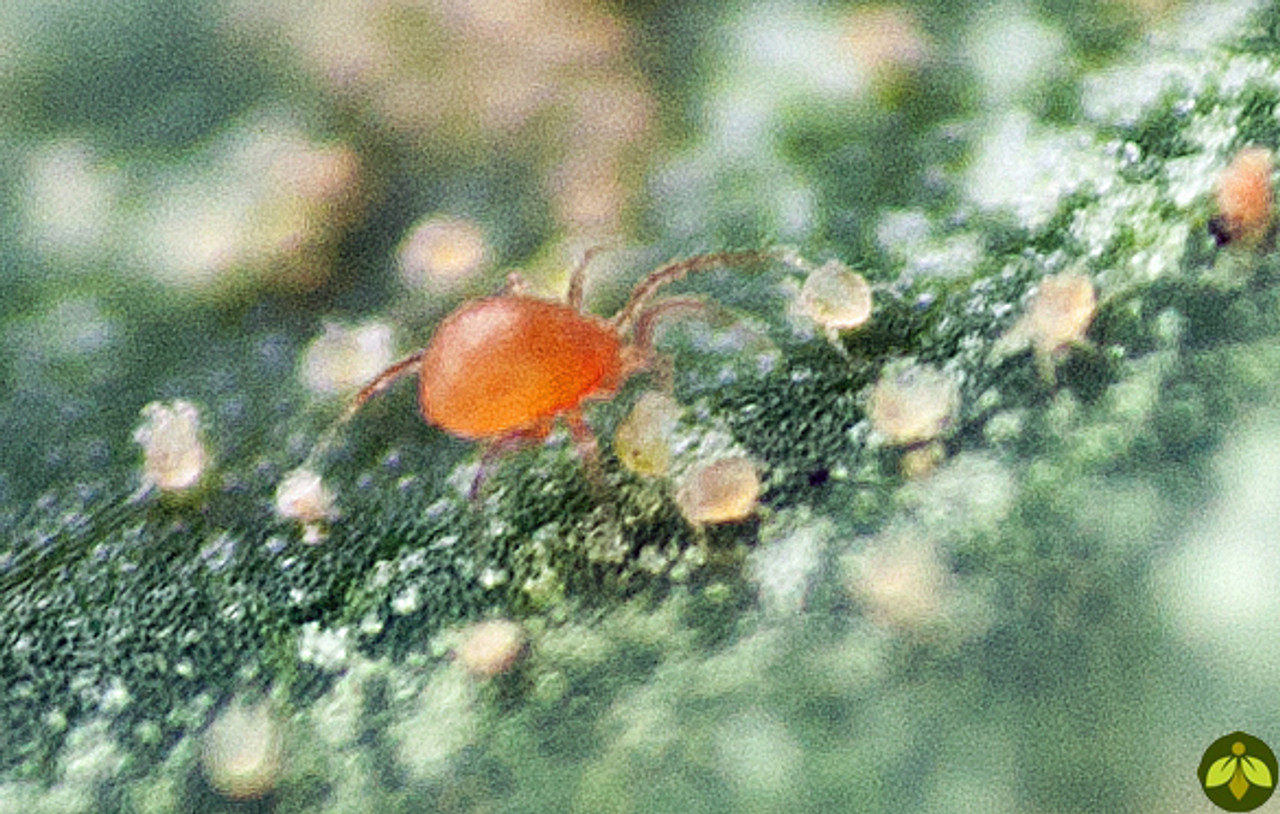Description
Phytoseiulus persimilis is used for spider mite control and management. These are true killers that can’t go long without food. They’re voracious predators of most of the spider mite pest Tetranychus spp. Some of the species they impact include: the two-spotted mite T. urticae, the carmine red mite T. cinnabarinus, and the Pacific mite T. pacificus.
Lifestyle
The tiny 0.5 mm hunter-orange female spider mite predators lay eggs within spider mite concentrations and their webbing (which is produced by the two-spotted mite), if present. They can lay up to 60 eggs! They hatch into minuscule larvae which develop into nymphal forms before reaching adulthood. These, too, are fierce predators consuming many spider mites, eggs, and young. The lifespan of these spider mite predators is roughly 8 days in their immature stages, then around 36 days as adults. The conditions for optimum performance will be between 70–85°F (extended to 60–90°F) with a relative humidity of between 60–90%. Please note, however, cooler temperatures will hamper reproduction and development to a certain degree.
Benefits
There are many benefits to using Phytoseiulus persimilis for spider mite control. These predatory mites are gluttonous and it’s definitely to your advantage. If you put Phytoseiulus persimilis in a suitable environment with nearly any crop to clean up two-spotted mites, that’s exactly what they’ll do. They’re very fast, very active, and very thorough. Phytoseiulus persimilis are also really cost-effective — not the most cost-effective for spider mite control, but worthwhile anyway. At the recommended rates, they can be a very loud bang for the buck! These spider mite predators are an excellent curative agent.
Drawbacks
If you’re looking for effective spider might control and there doesn’t happen to be a spider mite suitable to the tastes of Phytoseiulus persimilis available, they’ll quickly starve to death. Unlike Neoseiulus californicus which can walk around as a wafer-thin disk endlessly eating nothing, Phytoseiulus persimilis must have fresh meat.This predatory mite species will not do very well in cold climates.
Scouting
Uninfested and damage/webbing-free new growth is a good sign. So is empty webbing, in interiorscapes and some greenhouses, or missing webbing outdoors (if it was there to begin with).Unless your scouting is really top-notch, you’ll probably miss most of the predators present on the leaves. However, if you see some orange, long-legged, agile-looking mites running quickly across the leaf’s undersurface, they are probably these predators.
Advisories
Be certain of your pest species. Phytoseiulus persimilis are not as flexible as some other available species for spider mite control since they only like Tetranychus species, but not all of them. Low-growing crops like strawberries allow these spider mite predators to work all summer long, in the hottest of conditions (this is true in California where these are often used in strawberries and other like-crops). The reason, we feel, is that it’s a more humid microclimate close to the ground and under the canopy of the plants’ leaves. To artificially recreate these conditions, try a little foliar misting. Most pernicious varieties of mites prefer hot, dry conditions. Consequently, between the coolness and humidity increase when misting, you will be hampering the pests as well as helping the good guys.
Usages
Where can these spider mite predators be used? Where can’t they be used would be a more appropriate question. We’ve seen the successful implementation of these species in just about every conceivable situation, except tomatoes where they don’t perform as well. If you have the appropriate species and number of mites, and if the conditions are right, control is virtually inevitable. Two Spotted Spider Mite (Tetranychus urticae)
• Produces complex system of webbing that helps them move from plant to plant, is used to lay eggs, and is used to protect from predators or pesticides (the webbing must be removed prior to treatment)
• Life cycle from egg to adult shortens in higher temperatures, causing population explosion in outdoor/greenhouse crops in summer
• BCAs include: P. persimilis, N. fallacis, N. californicus, F. acarisuga, C. rufilabris*
Release Rates for Phytoseiulus persimilis
| Classification | Release Information |
| Low | 0.5 per square feet. Regular releases are recommended as needed. |
| High | 2 per square feet |








